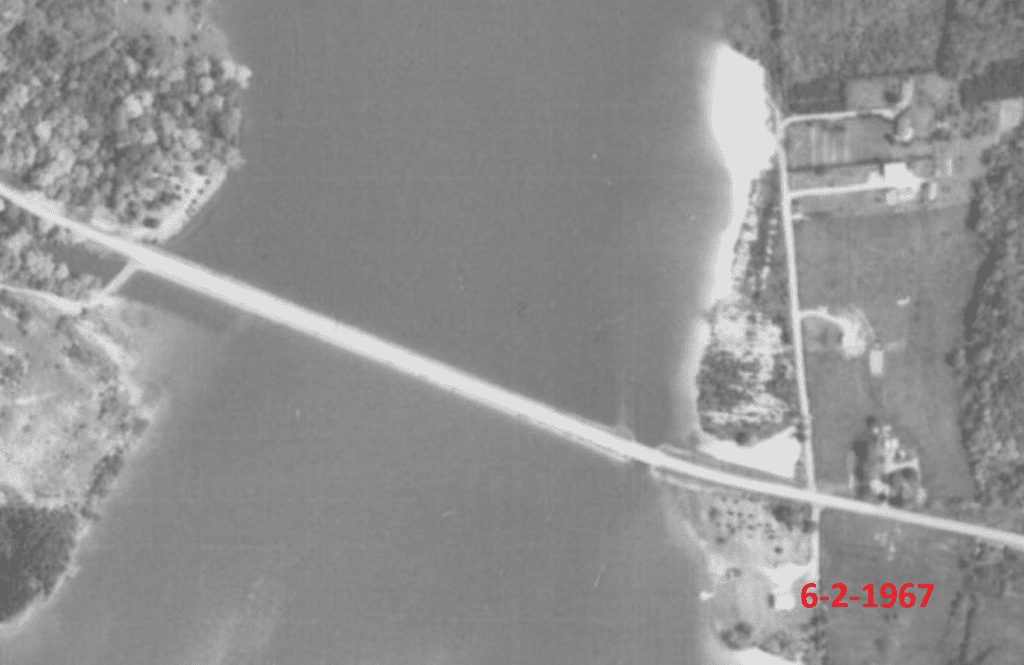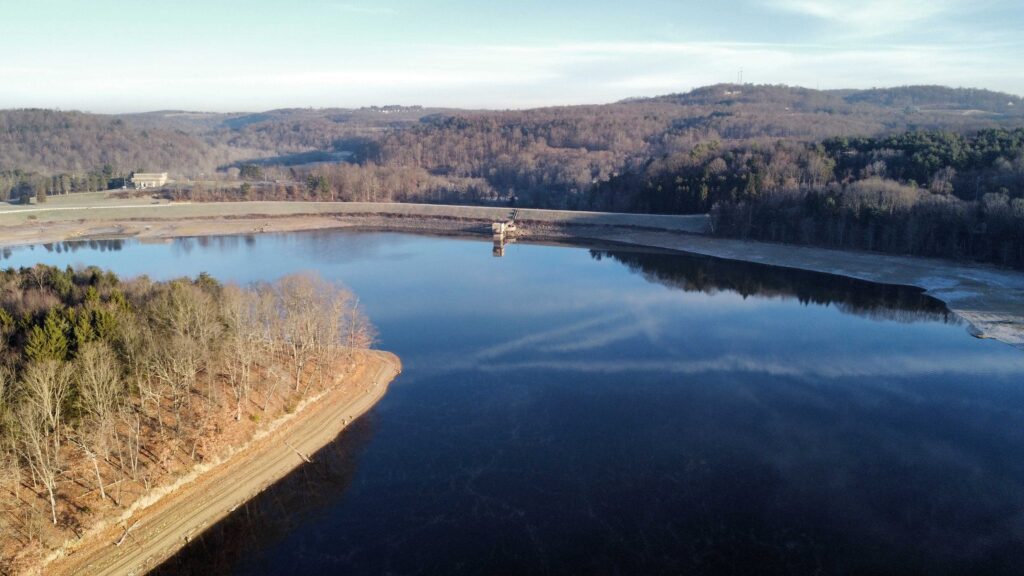Introduction:
The Municipal Authority of Westmoreland County (MAWC) has a long history, with its reservoir in operation since 1953. Over the years, it has played a vital role in supplying water to the community. However, recent discrepancies and uncertainties regarding water usage and reporting by MAWC have raised questions and concerns that MAWC is providing misinformation among the public. In this article, we will examine the inconsistencies surrounding MAWC’s water usage data and its relationship with natural gas producers CNX and Olympus.

Above, we present historic images from the late 60’s drought, a time when MAWC claims Beaver Run reached its lowest levels. As of the time of publishing, we have not received clarification from MAWC regarding whether the depth of Beaver Run has changed in the last 55 years or the specific location from which they are measuring these levels. It is worth noting that sedimentation over time can impact the accuracy of using height above sea level as an indicator of depth or water remaining.
Furthermore, an intriguing observation has been made regarding the flow of water within Beaver Run. It appears that water movement from the rear of Beaver Run to the front may have changed. This is evident from observations at the bridge on Route 286, where water levels behind the bridge seem higher than those on the dam side, and there appears to be reduced water flow under the bridge opening (see photo below). The source images from USGS did not show this activity in the late 60s.



However, we leave it to you to draw your own conclusions about the current state of Beaver Run. The photos below were taken over the past week at various locations within Beaver Run and shared with us by an anonymous source, adding an additional layer of intrigue to this ongoing discussion.











Historical Perspective:
In January 1967, the MAWC reservoir reached an all-time low elevation record of 1029.9 feet. This occurred after a period of several dry years. During that time, the 60-month precipitation rate was 192.48 inches, significantly lower than the current rate in 2023, which stands at 241.52 inches. The average 5-year precipitation rate is 216.1 inches. Currently Westmoreland County has more precipitation than normal over the extended 60 month period. Compared to the late 1960’s rain does not appear to be an issue when looked at over long time periods.

Year to year we also are above average precipitation with the average being 43.30 in and this year 43.42 inches of rain. Rain in the short term also is slightly above average; Beaver Run is not typically this low even in years with below average rain.

Discrepancies with Natural Gas Producers:
One of the primary concerns revolves around the water usage of natural gas producers, CNX and Olympus, and the inconsistencies in the data provided by MAWC.
- Olympus Reports to PA DEP:
Olympus has reported its water withdrawal activities to the Pennsylvania Department of Environmental Protection (PA DEP). According to their reports, Olympus continued withdrawing water from MAWC’s Beaver Run facility as late as October 28th for the reporting period ending October 31, 2023. This contradicts MAWC’s claim that withdrawals ceased in July.
- CNX Water Management Plan:
CNX, another natural gas producer, had its water management plan approved on October 31st. Additionally, they began filling up a storage tank, with no confirmation as to whether this water came from MAWC. Notably, the pipeline connecting to this location originates at Beaver Run. Furthermore, CNX has not yet filed reports on their water usage or responded to inquiries about their water consumption.

Inconsistent Reporting by MAWC:
MAWC’s own reporting regarding the water usage by these natural gas producers has been inconsistent and puzzling. Facts and figures are found without time scales (below), comparing different units such as ytd to full years, and appear to conflict with more authoritative sources.
- Shifting Numbers for Oil and Gas Operations:
Initially, MAWC reported that 301 million gallons were used for oil and gas operations. However, they later backtracked, stating that the actual usage was only 129 million gallons (below). Such a significant discrepancy raises doubts about the accuracy and transparency of MAWC’s reporting.

Conclusion:
The inconsistencies and uncertainties surrounding MAWC’s water usage data, as well as its relationship with natural gas producers CNX and Olympus, have left the public with valid concerns. It is essential for MAWC to provide transparent and accurate information to address these questions and ensure the responsible and sustainable management of our precious water resources. As this issue unfolds, it is crucial for both MAWC and the natural gas producers to engage in open and honest dialogue with the community they serve.





YOU PEOPLE BETTER > WISE UP – THIS IS TOTALLY RIDICULIOUS
YOU SHOULD HAVE DID THE > RIVER LONG AGO – > IDIOTS !!!!